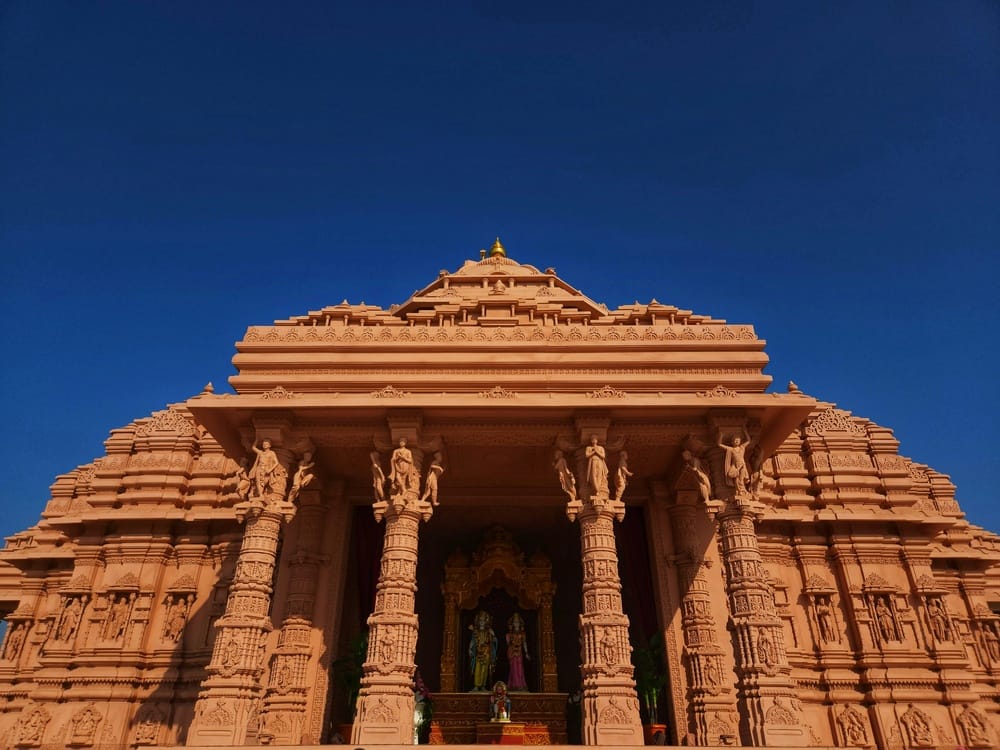A Complete Guide to the Best Ayodhya Tourist Places for Your Trip
Ayodhya, situated on the serene banks of the Saryu River in Uttar Pradesh, is a city steeped in spirituality, mythology, and heritage. Revered as the birthplace of Lord Rama, Ayodhya attracts millions of pilgrims and travellers every year. If you are planning a visit, here is a complete guide to the best Ayodhya tourist places that will make your trip spiritually fulfilling and culturally enriching.
1. Ram Janmabhoomi Temple
The most significant site among all Ayodhya tourist places is the Ram Janmabhoomi Temple. This grand temple stands at the exact spot believed to be the birthplace of Lord Rama. The temple’s magnificent architecture, beautifully carved pillars, and serene premises create a divine atmosphere that fills devotees with reverence and peace. Visiting this temple is a once-in-a-lifetime experience for spiritual seekers and pilgrims.
2. Hanuman Garhi
Hanuman Garhi is a prominent temple dedicated to Lord Hanuman, located atop a hillock near Ram Janmabhoomi. Devotees believe that Lord Hanuman resides here to protect Ayodhya. The temple is reached after climbing around 76 steps and houses a unique idol of Lord Hanuman with Lord Rama and Sita seated on his lap. The temple offers panoramic views of the city and is always bustling with devotees offering prayers for strength and protection.
3. Kanak Bhawan
Kanak Bhawan, located near Ram Janmabhoomi, is another must-visit temple in Ayodhya. It is believed that this beautiful temple was gifted to Goddess Sita by Queen Kaikeyi after her marriage to Lord Rama. The temple is adorned with colourful architecture, intricate decorations, and golden-crowned idols of Lord Rama and Sita, making it a visually delightful and spiritually uplifting experience for visitors.
4. Dashrath Mahal
Dashrath Mahal, also known as Bada Asthan, was the royal residence of King Dashrath, father of Lord Rama. The palace is located close to Ram Janmabhoomi and houses shrines with idols of Lord Rama, Sita, Lakshmana, Bharat, and Shatrughna. Its grand entrance, colourful murals, and devotional ambience make it an important place to understand Ayodhya’s royal and mythological heritage.
5. Nageshwarnath Temple
Among the ancient Ayodhya tourist places is the Nageshwarnath Temple dedicated to Lord Shiva. It is believed to have been established by Kush, son of Lord Rama. The temple holds great significance during Mahashivratri when thousands of devotees gather here to offer prayers and perform rituals. Its towering shikhara and peaceful premises create a spiritually rejuvenating environment for devotees.
6. Treta Ke Thakur
Treta Ke Thakur is a historically significant temple built at the site where Lord Rama performed the Ashwamedha Yagna. The temple houses black stone idols of Lord Rama, Sita, Lakshmana, Bharat, Shatrughna, and Hanuman, believed to date back to the Treta Yuga. The temple opens only on special occasions and Ekadashi, attracting devotees who wish to witness its sacred legacy.
7. Saryu River and Ram ki Paidi
The Saryu River is the lifeline of Ayodhya, holding immense spiritual significance for pilgrims. Ram ki Paidi is a series of ghats constructed along the river where devotees take holy dips to cleanse their sins. The evening aarti at Ram ki Paidi is a mesmerising sight with chanting priests, glowing diyas, and the peaceful river flowing by, creating a truly divine experience for visitors.
8. Guptar Ghat
Guptar Ghat is another important site on the banks of the Saryu River. It is believed that Lord Rama took Jal Samadhi here, ending his earthly life and ascending to Vaikuntha. The ghat has small temples and engraved footprints of Lord Rama, making it an ideal place for quiet reflection, meditation, and experiencing Ayodhya’s serene spiritual side away from the crowds.
9. Mani Parvat
Mani Parvat is a small hillock believed to be a part of the Sanjeevani mountain carried by Lord Hanuman during the Ramayana. The site has a small temple dedicated to Lord Hanuman and offers panoramic views of Ayodhya city and its lush surroundings. The peaceful environment, mythological relevance, and scenic beauty make it a perfect spot for spiritual contemplation and photography.
10. Tulsi Smarak Bhawan
Tulsi Smarak Bhawan is dedicated to Goswami Tulsidas, the great poet-saint who composed the Ramcharitmanas. The Bhawan houses a museum, library, and research centre showcasing his life, works, and the legacy of Ramayana literature. It also hosts Ram Katha recitals, devotional programs, and cultural events, making it an essential stop for those interested in literature, spirituality, and Indian culture.
Best Time to Visit Ayodhya
The ideal time to visit Ayodhya is from October to March, when the weather is pleasant for temple visits and riverside rituals. Festivals like Ram Navami, Diwali, and Dussehra are celebrated grandly here, adding to the spiritual charm of your trip.
Conclusion
This complete guide to the best Ayodhya tourist places will help you plan a spiritually enriching and culturally immersive trip. From grand temples like Ram Janmabhoomi and Hanuman Garhi to peaceful ghats like Guptar Ghat and historical sites like Dashrath Mahal, each place in Ayodhya radiates devotion, history, and timeless faith. Explore these sacred sites to connect with India’s rich mythological heritage and experience true spiritual bliss on your next journey.


